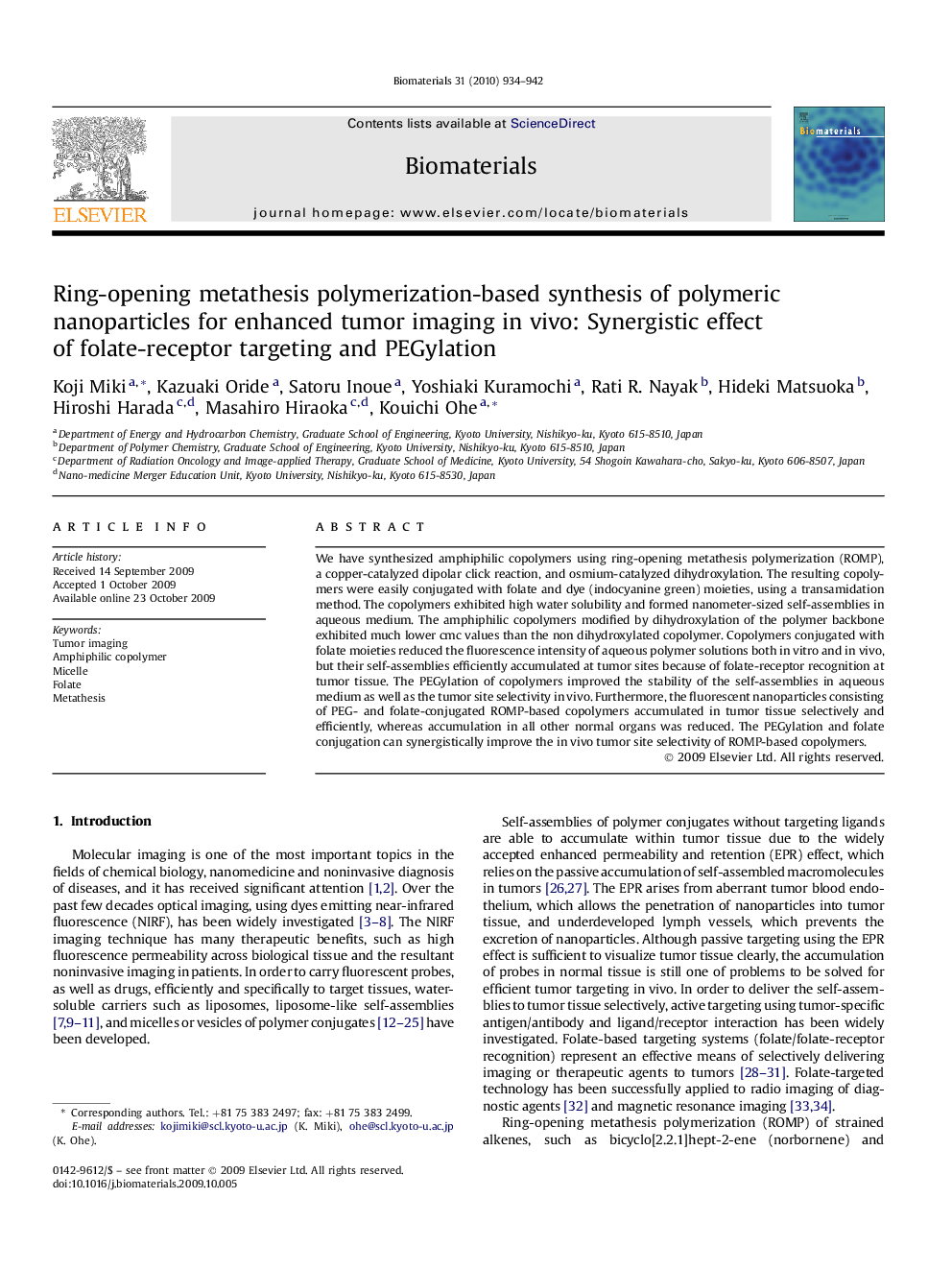| Article ID | Journal | Published Year | Pages | File Type |
|---|---|---|---|---|
| 9918 | Biomaterials | 2010 | 9 Pages |
We have synthesized amphiphilic copolymers using ring-opening metathesis polymerization (ROMP), a copper-catalyzed dipolar click reaction, and osmium-catalyzed dihydroxylation. The resulting copolymers were easily conjugated with folate and dye (indocyanine green) moieties, using a transamidation method. The copolymers exhibited high water solubility and formed nanometer-sized self-assemblies in aqueous medium. The amphiphilic copolymers modified by dihydroxylation of the polymer backbone exhibited much lower cmc values than the non dihydroxylated copolymer. Copolymers conjugated with folate moieties reduced the fluorescence intensity of aqueous polymer solutions both in vitro and in vivo, but their self-assemblies efficiently accumulated at tumor sites because of folate-receptor recognition at tumor tissue. The PEGylation of copolymers improved the stability of the self-assemblies in aqueous medium as well as the tumor site selectivity in vivo. Furthermore, the fluorescent nanoparticles consisting of PEG- and folate-conjugated ROMP-based copolymers accumulated in tumor tissue selectively and efficiently, whereas accumulation in all other normal organs was reduced. The PEGylation and folate conjugation can synergistically improve the in vivo tumor site selectivity of ROMP-based copolymers.
